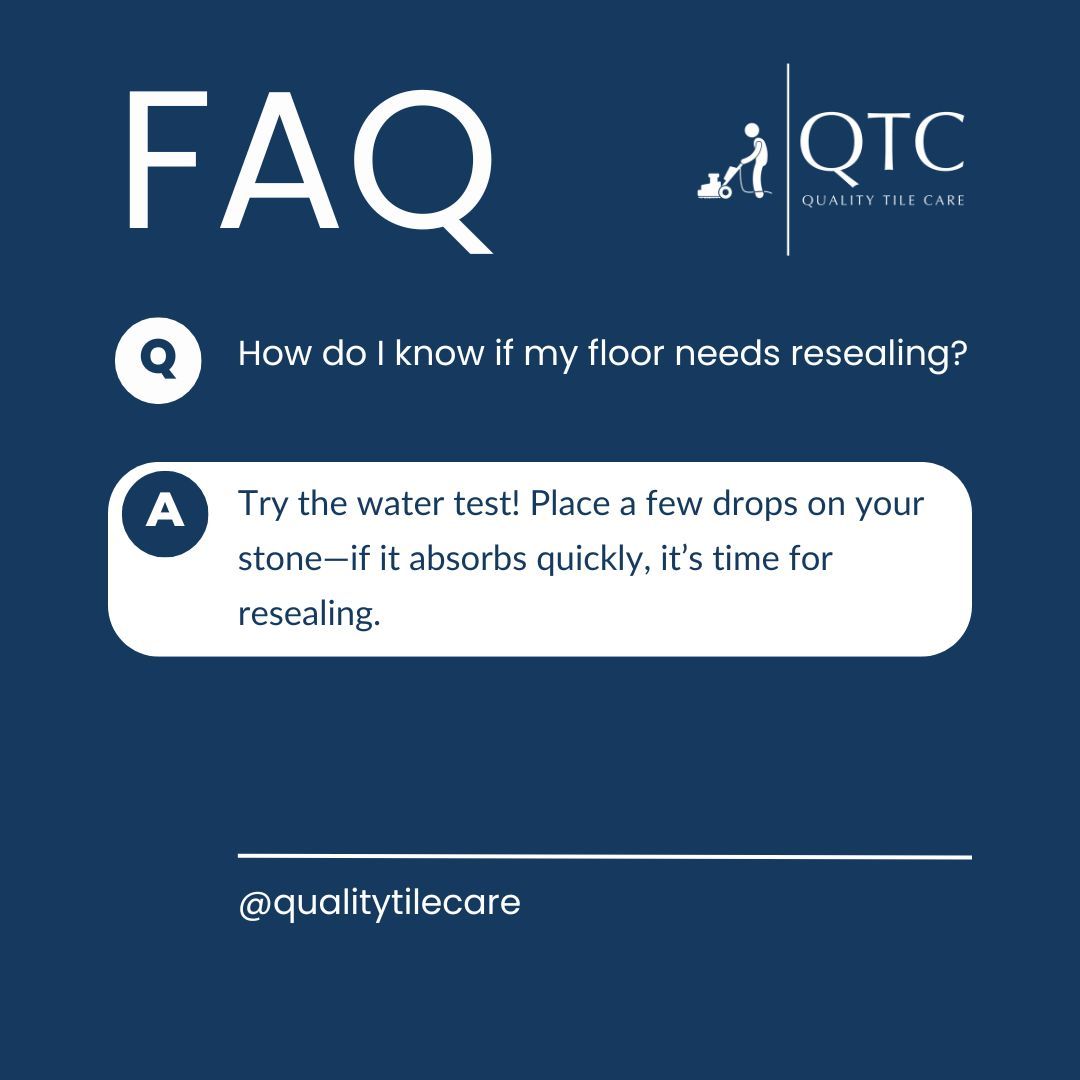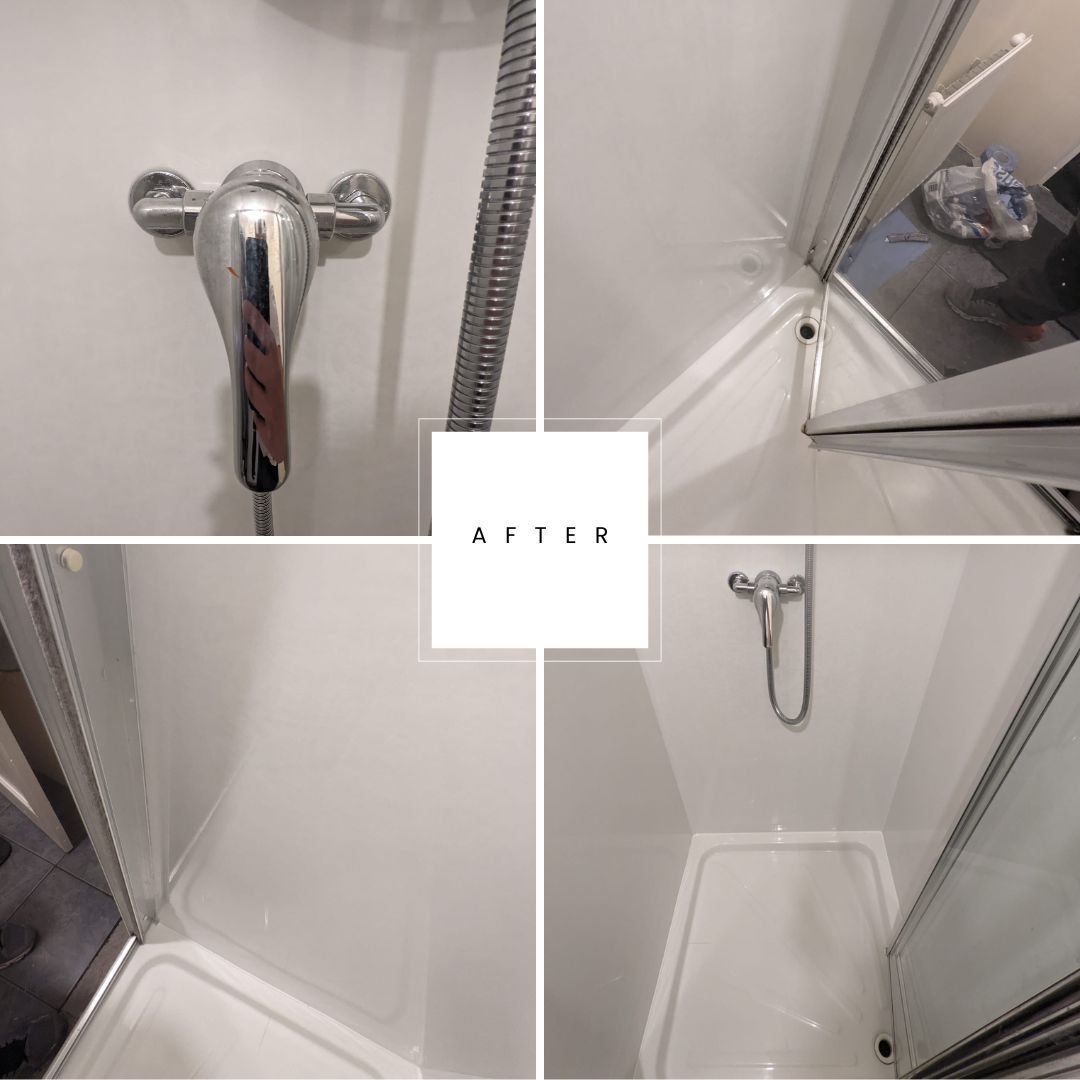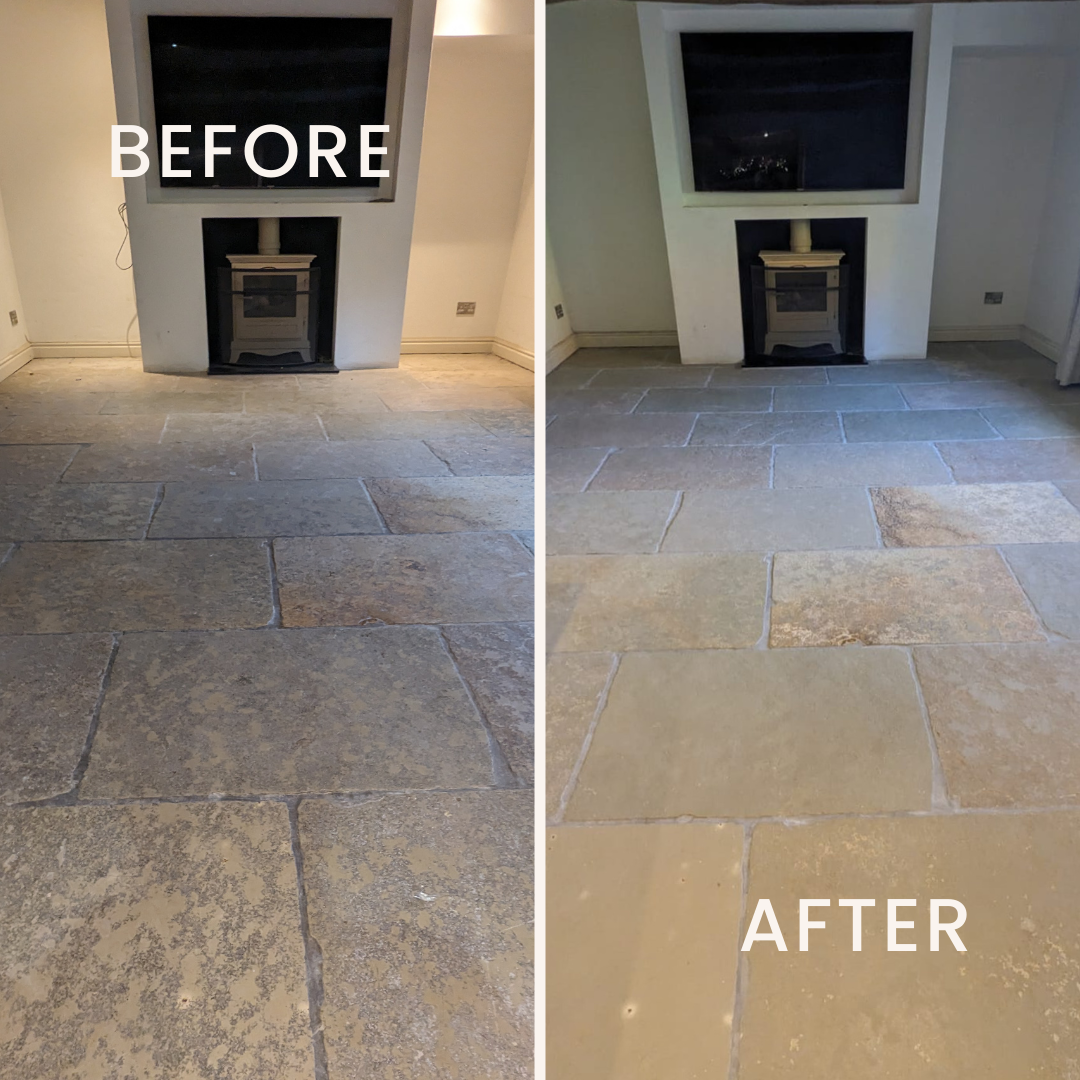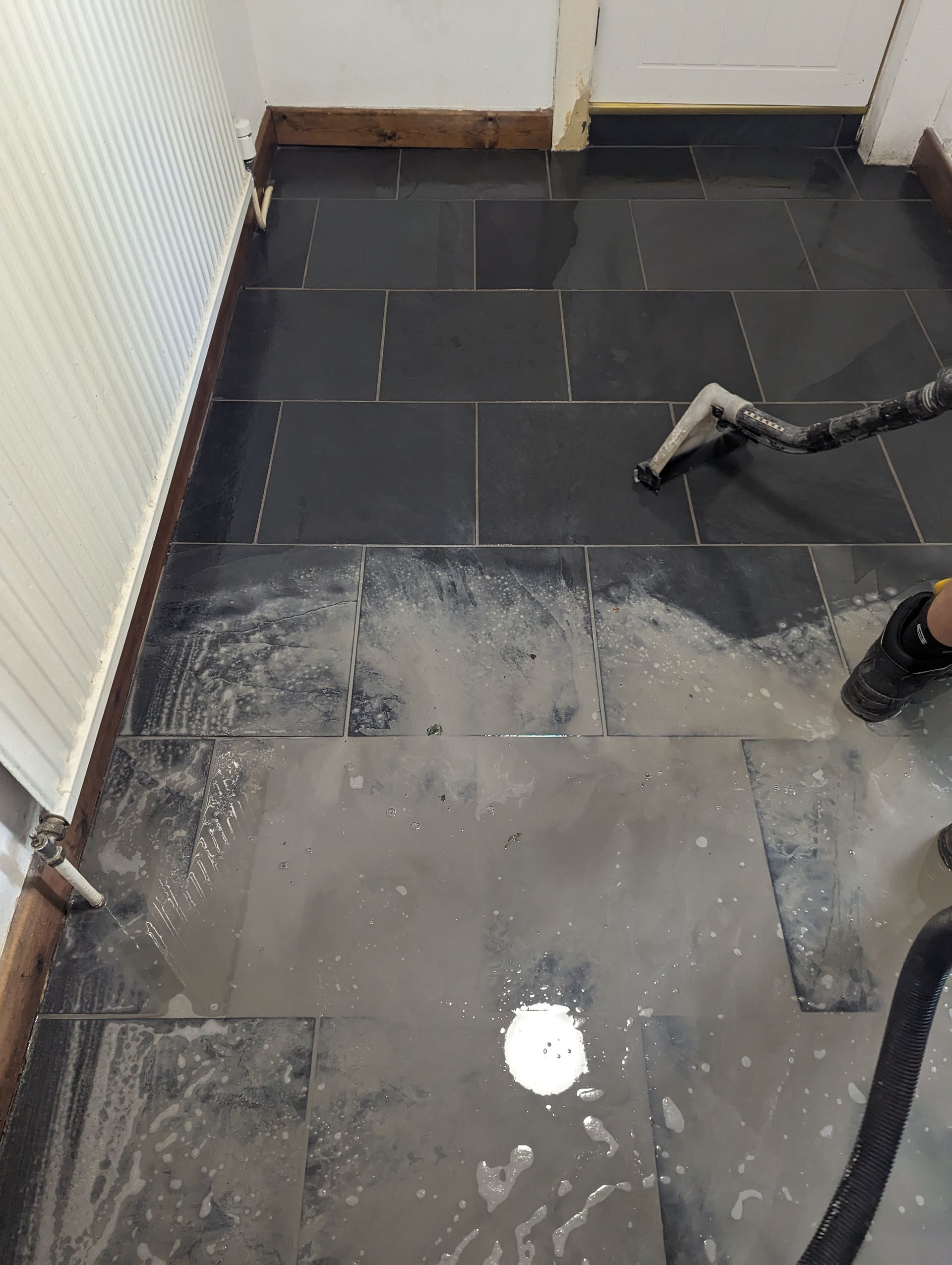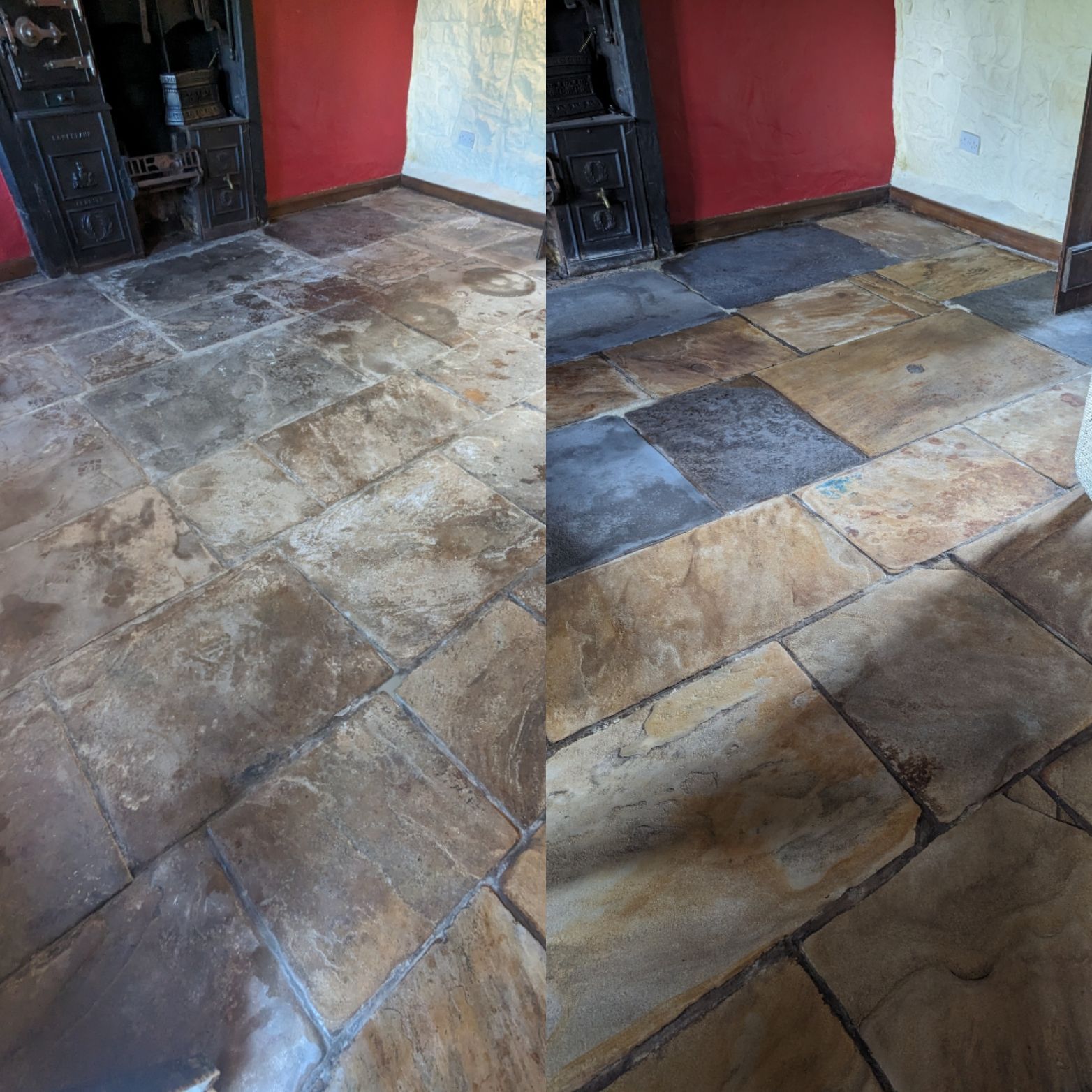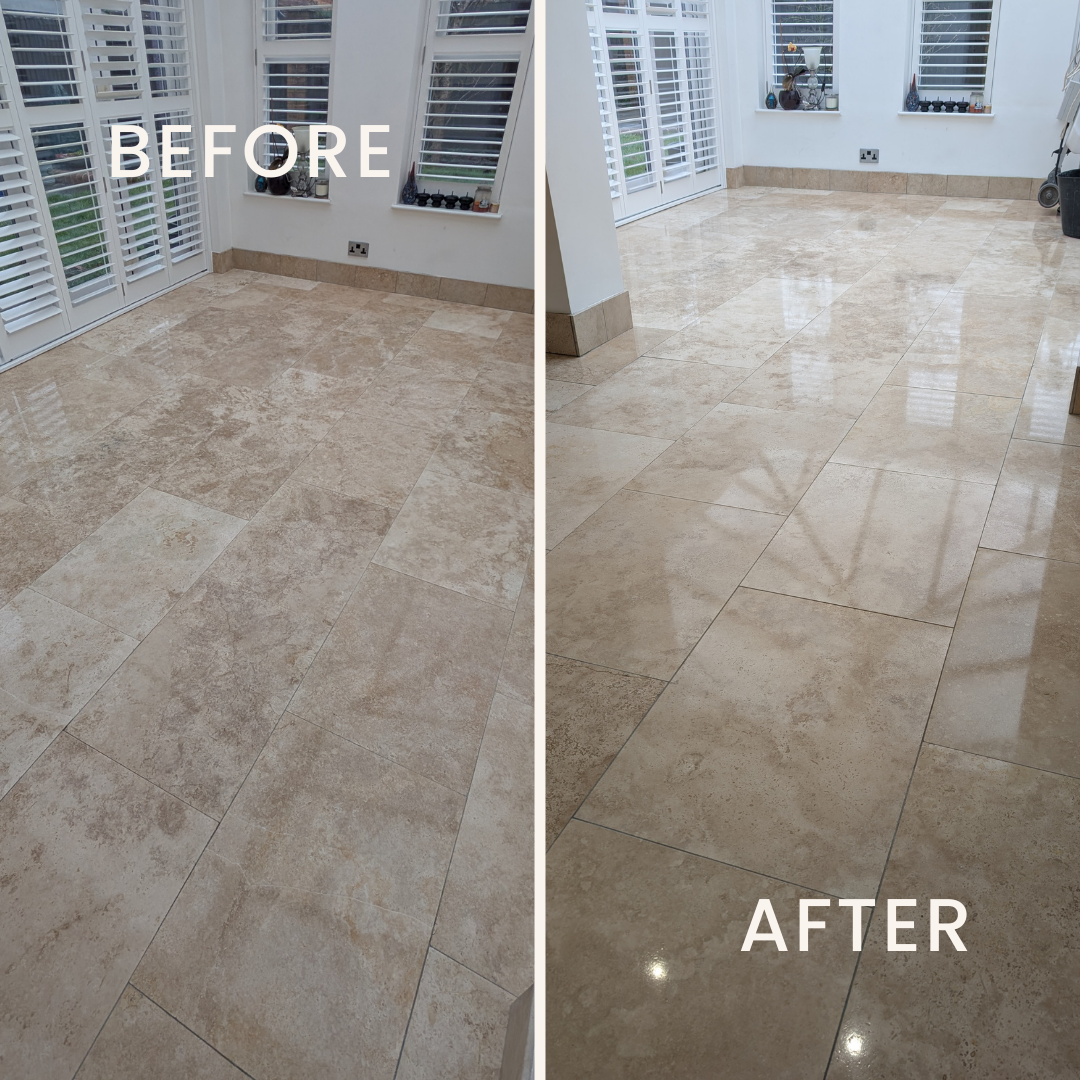HISTORICAL VICTORIAN ERA OLD QUARRY & HANDMADE CERAMIC FIREPLACE TILES RESTORATION IN WHALEY RANGE, GREATER MANCHESTER
Listed Property Quarry & Handmade Ceramic Fireplace Tiles Deep Cleaning and Sealing
Quarry tiles have a long history dating back to ancient times. The exact date of their first discovery is challenging to pinpoint, but they are believed to have been in use for thousands of years. The origins of quarry tiles can be traced back to ancient civilizations like the Greeks and Romans.
The Greeks and Romans used clay tiles for various purposes, including flooring in their buildings, bathhouses, and other structures. These early quarry tiles were made by hand, shaped from clay, and fired in kilns to harden them. The natural clay color and durability made them a popular choice for practical and decorative purposes.
Throughout history, quarry tiles continued to be used in different parts of the world, evolving in style and manufacturing techniques. They were particularly popular in Europe during the Middle Ages and the Renaissance, where they were used extensively in castles, churches, and public buildings.
In the 19th and 20th centuries, quarry tiles experienced a resurgence in popularity, especially in industrial settings and public spaces. Modern manufacturing methods allowed for more consistent and uniform production of quarry tiles, making them accessible to a broader market.
Today, quarry tiles are still used in various applications, both indoors and outdoors, and continue to be valued for their durability, natural appearance, and resistance to wear. While their early discovery dates back to ancient civilizations, their enduring appeal and usefulness have kept them relevant in contemporary architecture and design.
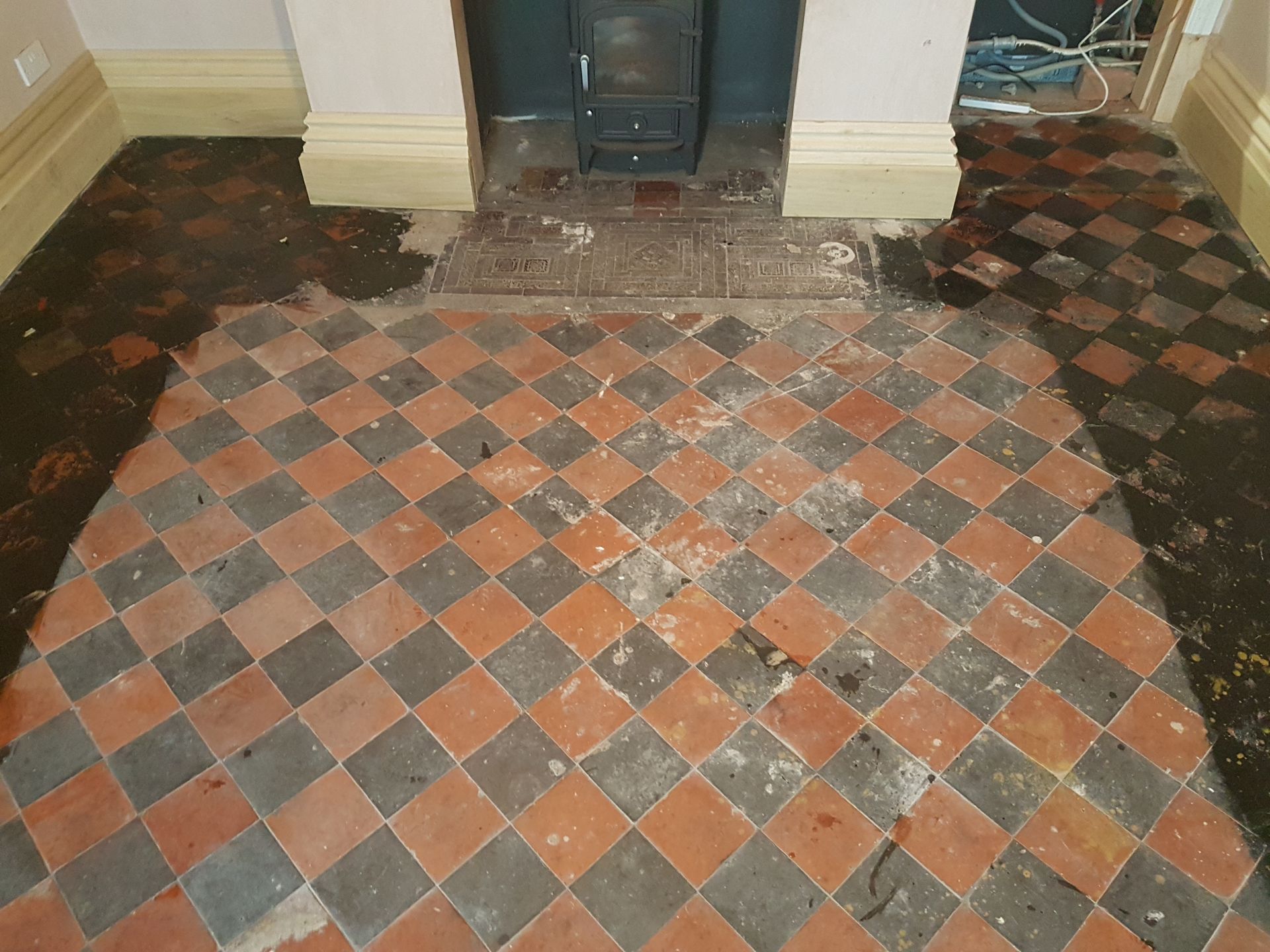
Deep Cleaning of a Quarry Tiled Floor in a Listed Property
Quarry floor restoration involves the process of renewing and rejuvenating worn-out or damaged quarry floors, restoring them to their original beauty and functionality. It typically includes a series of steps such as cleaning, repairing cracks or damages, grinding, honing, polishing, and sealing the surface. The aim is to bring back the natural beauty of the quarry floor, enhancing its appearance while also improving its durability and resistance to wear and tear. This restoration process can be applied to various types of natural stone floors, including marble, granite, limestone, travertine, and other natural stones, as well as terrazzo flooring. The final result is a visually stunning, safe, and long-lasting quarry floor that adds value and elegance to any space.
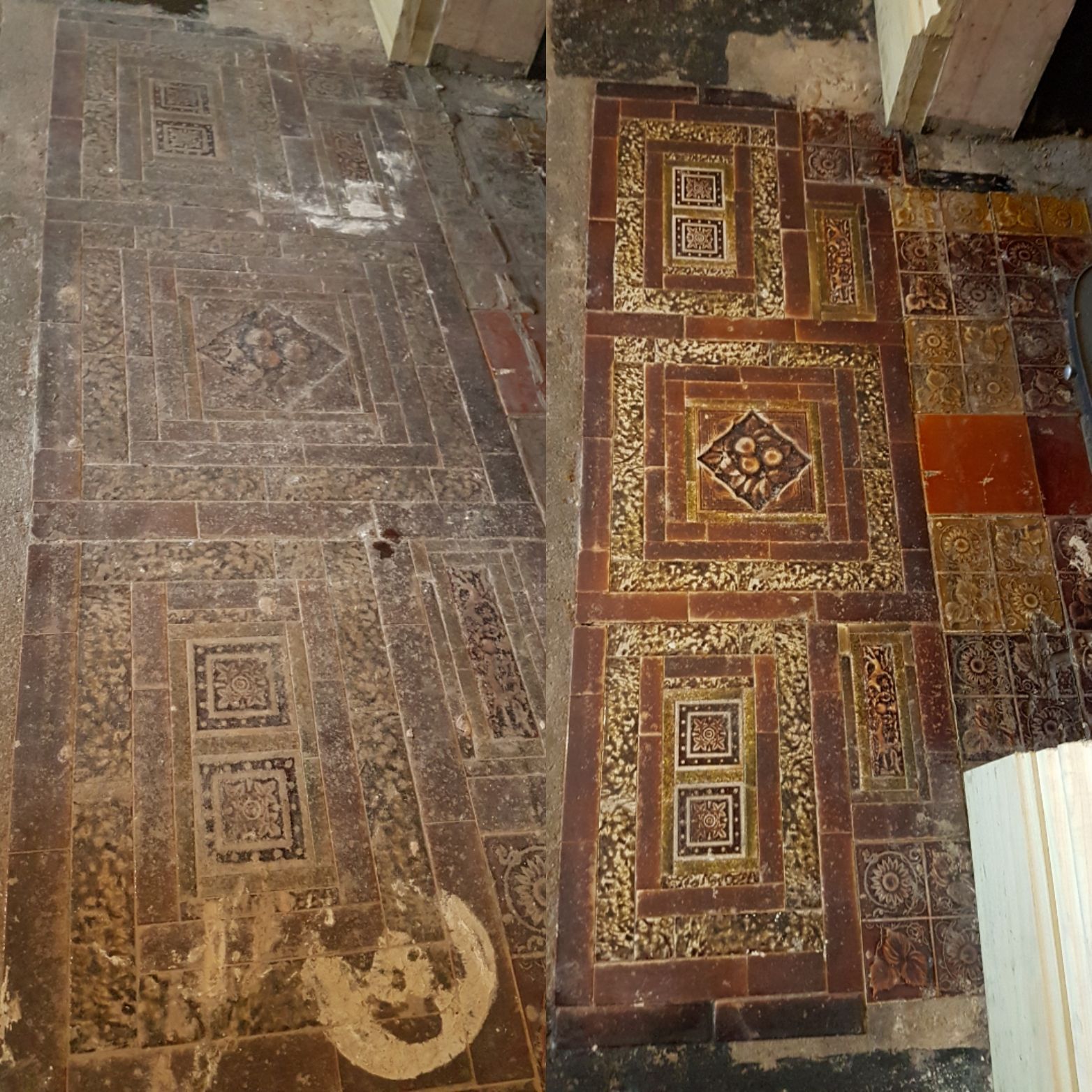
Sealing of a Quarry Tiled Floor in a Listed Property
Sealing quarry tiles is an essential step in their maintenance to protect and preserve their appearance and longevity. Quarry tiles are typically porous, which means they can absorb liquids, dirt, and stains if left unsealed. Sealing them creates a protective barrier on the surface, preventing water and other substances from penetrating the tiles.
Regularly maintaining the sealed quarry tiles by cleaning them with a pH neutral cleaning product and resealing them periodically (usually every 2-4 years) will help to keep them looking beautiful and extend their life.
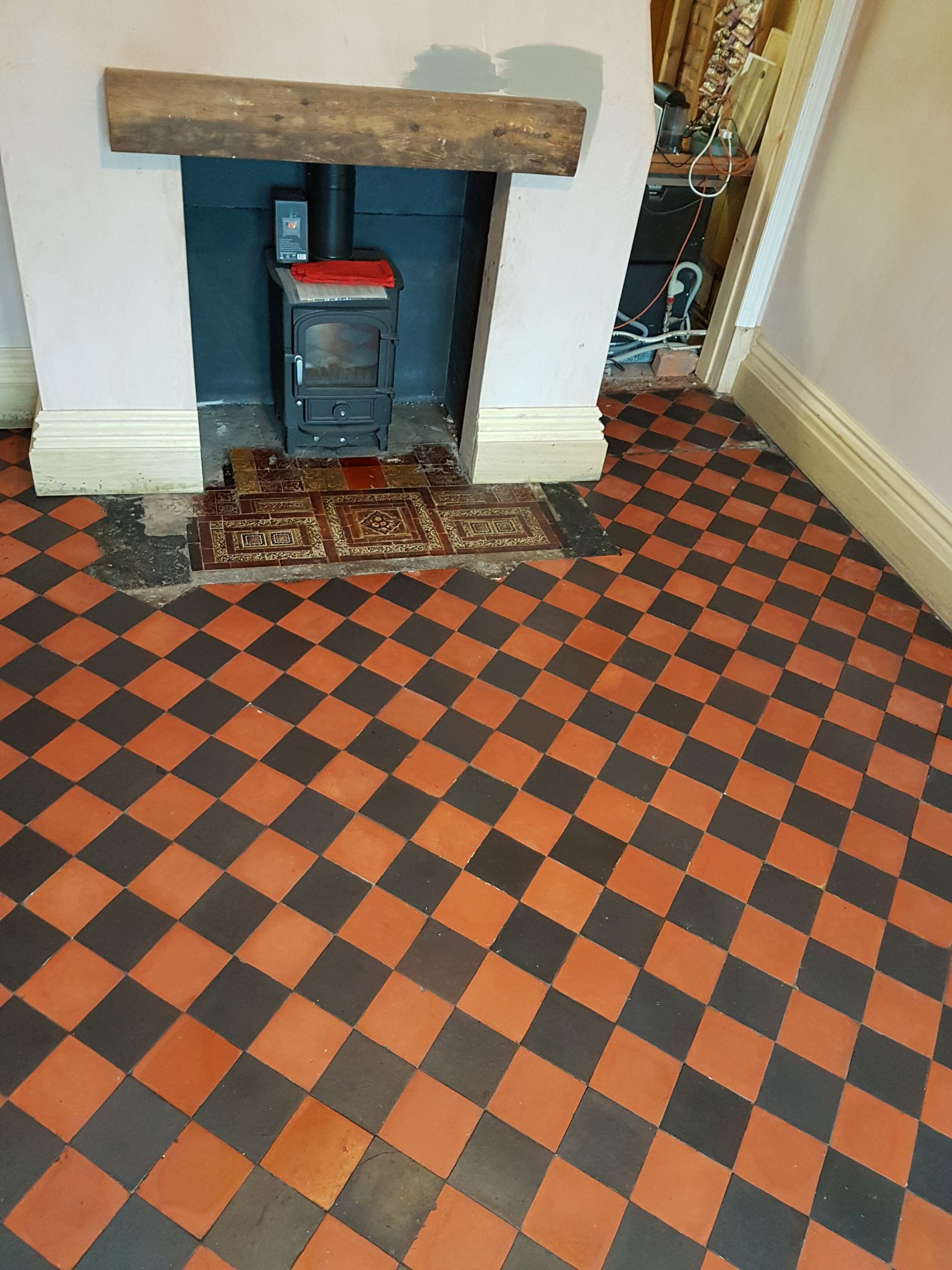
At Quality Tile Care , we take immense pride in creating a significant impact, just as we did with this remarkable project. Witness our expertise in reviving a 130-year-old Quarry Tile Floor through meticulous Deep Cleaning and Sealing!
To enquire about your tiled floor from our tile restoration experts, get in touch through our C ontact page or call 07598 913 581.

Contact Us
Our Contact Details

